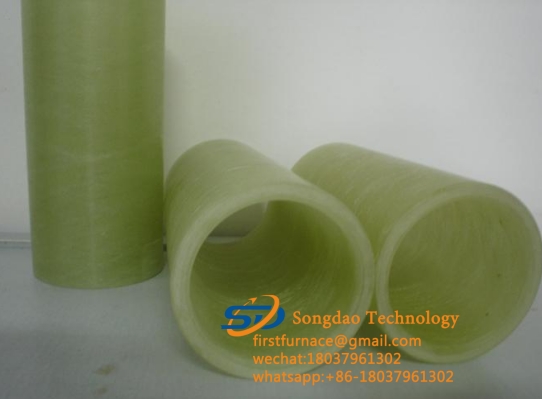- 08
- Feb
Produksjonsteknologi og utvikling og anvendelse av glassfiberrør
Produksjonsteknologi og utvikling og anvendelse av glassfiberrør
Det er tre hovedtyper av glassfiberrør production processes: reciprocating filament winding process, continuous filament winding process and centrifugal casting process.
Frem- og tilbakegående filamentviklingsprosess (tilhører metoden med fast lengde): I denne prosessen går dyppetanken frem og tilbake med den roterende spindelen, og de lange glassfiberfilamentene plasseres i en viss skrå vinkel i forhold til spindelaksen og hjelpevinkelen (dvs. viklingsvinkelen) styres av forholdet mellom bevegelseshastigheten til dyppetanken og rotasjonshastigheten til doren, og translasjonsbevegelsen til dyppetanken styres av datastyrt elektromekanisk kontroll. Antall viklingslag økes gradvis inntil designet veggtykkelse er nådd. Etter at viklingen er fullført, er harpiksen i gjenstanden i det vesentlige herdet. Etter herding fjernes doren fra glassfiberrøret.
Continuous filament winding process (belonging to continuous method): The process is that the tube passes through a feeding station that supplies resin pre-impregnated roving, chopped glass fiber reinforced plastic fiber and resin sand mixture in motion, and the tube is continuously advancing in the core mold. made in.
Centrifugal casting process (belonging to the fixed-length method): In this process, the cut glass fiber reinforced material and sand are fed into a steel mold fixed on the bearing, and the unsaturated resin with catalyst is injected into one end of the steel mold to make the steel mold. It impregnates the reinforcing material. Under the action of centrifugal force, the resin replaces the air in the fibers and fillers, thereby producing a dense composite material without pores. Due to the action of centrifugal force, the inner wall of the tube forms a smooth and clean resin-rich inner surface layer. Cures at higher temperatures. The pipe made by this method is also called glass fiber reinforced plastic sand pipe.

